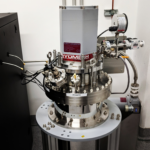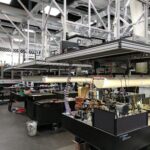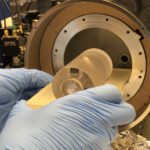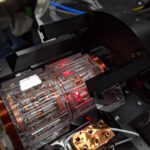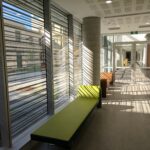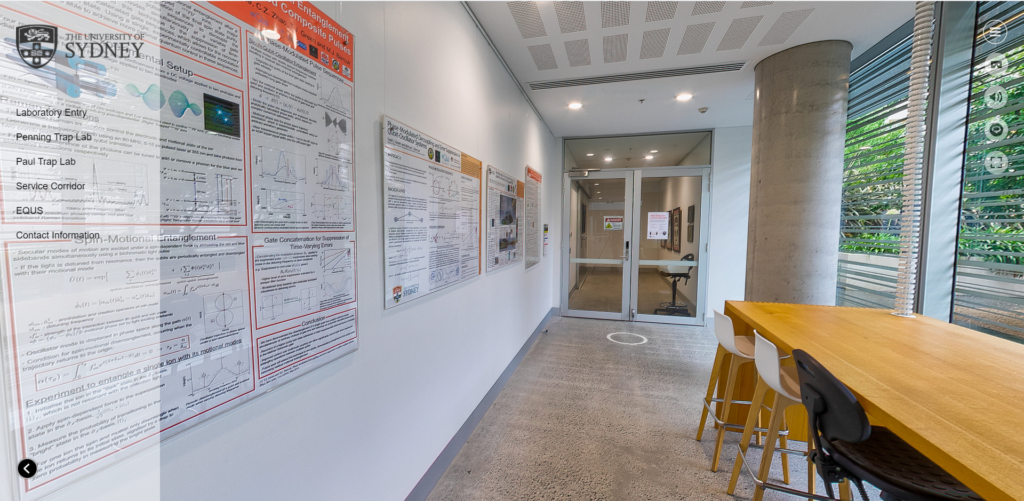The Quantum Control Laboratory is interested in the intersection of control engineering with experimental quantum information, quantum sensing, and precision metrology. Our team focuses on the development of quantum technologies based on trapped atomic ions and specialised high-precision microwave and laser systems. We currently operate the highest-performance quantum computer in the southern hemisphere and have demonstrated world-leading performance in quantum-logic error rates and coherent lifetimes.
The team also collaborates with Q-CTRL, an advanced-technology startup founded by Prof. Biercuk and focused on software for quantum control.
Students and postdoctoral researchers interested in opportunities should contact Dr Tingrei Tan or Dr Robert Wolf directly. Learn more about our research projects below.
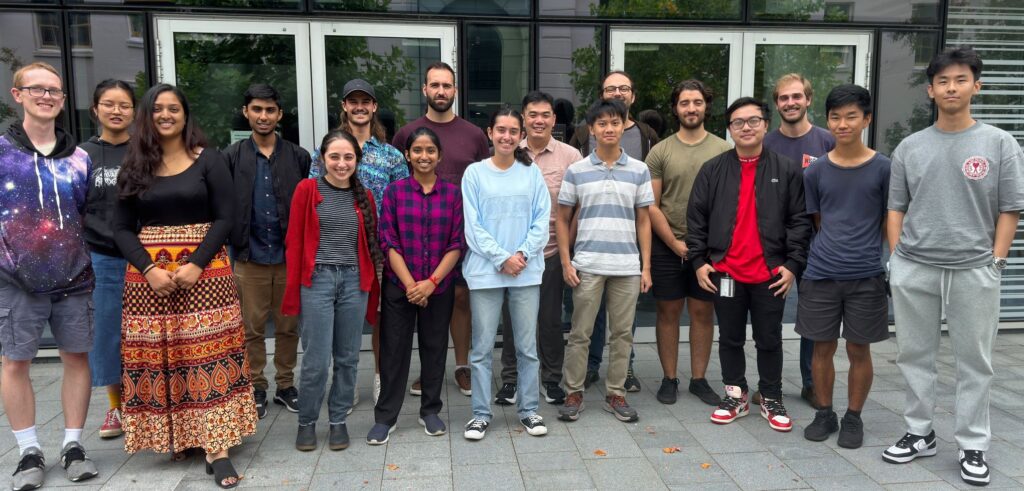
Research Projects
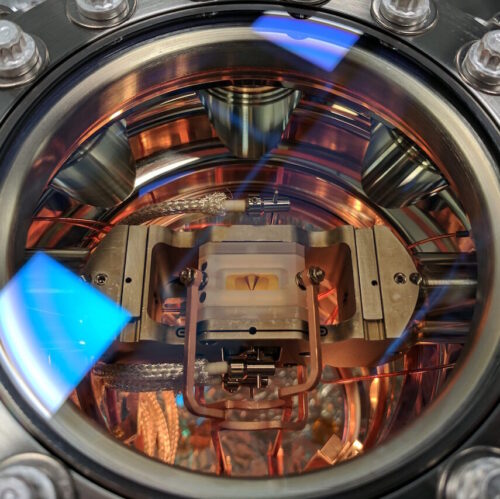
Quantum Computing with Trapped Ions
Project Leader: Dr. Ting-Rei Tan
Quantum computing promises to totally transform information processing, making previously inaccessible problems of real societal and economic relevance solvable.
The Quantum Control Laboratory is leading the development of quantum computing hardware based on trapped ions. We’re focused primarily on the realisation of ultra-high fidelity, error-robust quantum logic, as well as techniques to characterise hardware performance.
Selected manuscripts:
- Robust and deterministic preparation of bosonic logical states in a trapped ion
- Phase-modulated entangling gates robust to static and time-varying errors
- Dynamically corrected gates suppress spatio-temporal error correlations as measured by randomized benchmarking
- Experimental quantum verification in the presence of temporally correlated noise
- Phase-modulated decoupling and error suppression in qubit-oscillator systems
- The effect of noise correlations on randomized benchmarking
- Long-time Low-latency Quantum Memory by Dynamical Decoupling
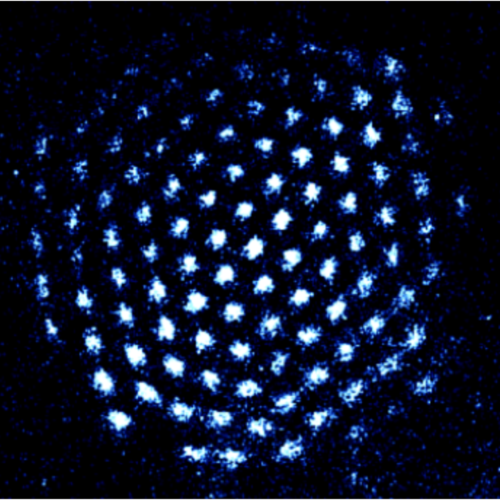
Quantum Simulation for Chemistry & Materials
Project Leader: Dr. Robert Wolf
The simulation of quantum coherent many-body systems is a promising new route to solve major problems in materials science for energy distribution. Through experiments using linear Paul traps and ion arrays in Penning traps we are seeking to engineer designer Hamiltonians for studies of problems including quantum magnetism and quantum chemistry.
Selected manuscripts:
- In-situ-tunable spin-spin interactions in a Penning trap with in-bore optomechanics
- Efficient site-resolved imaging and spin-state detection in dynamic two-dimensional ion crystals
- Site-resolved imaging of beryllium ion crystals in a high-optical-access Penning trap with inbore optomechanics
- Programmable quantum simulation by dynamic Hamiltonian engineering
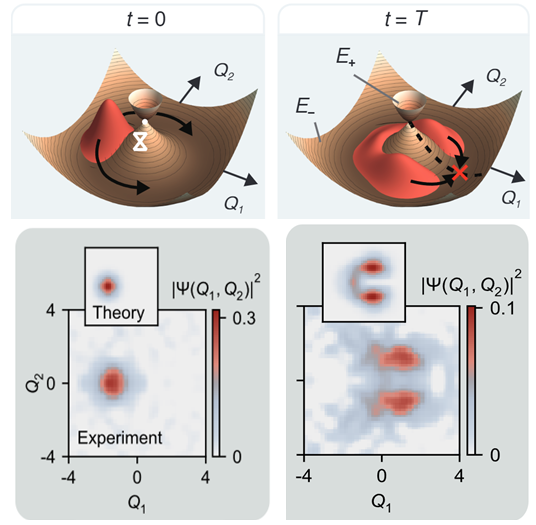
Quantum Simulation of Chemical Dynamics
Project Leader: Dr. Ting-Rei Tan
In collaboration with Prof. Ivan Kassal.
Simulating chemical dynamics is notoriously difficult on conventional computers, often scaling exponentially with molecular size.
We are developing new quantum technologies to enable simulations of a wide range of currently intractable chemistry problems. Our unique approach provides remarkable resource savings by leveraging under-used bosonic degrees of freedom in trapped-ion quantum computers to perform analog quantum simulations chemical dynamics.
Selected manuscripts:
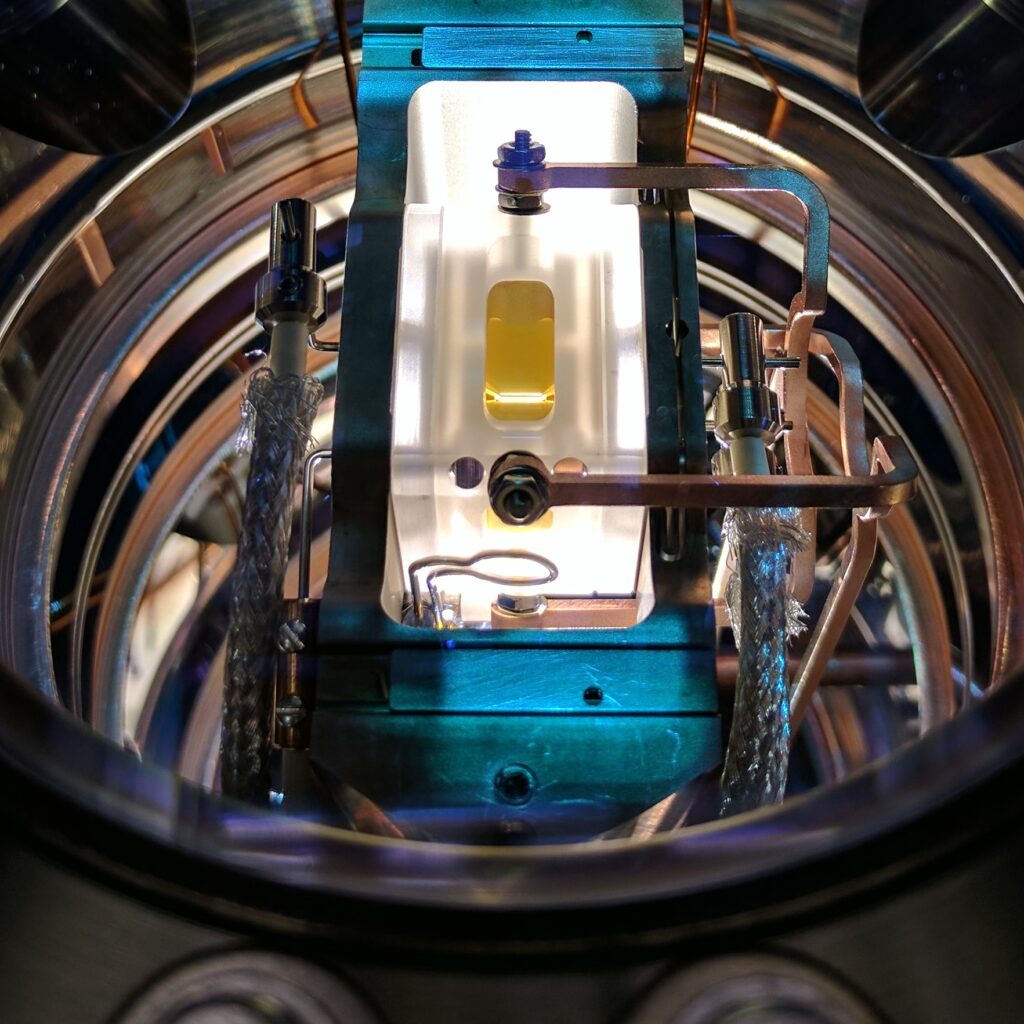
Quantum Control Engineering
Project Leader: Dr. Ting-Rei Tan
Control theory is a universal enabling discipline within the engineering community. We are seeking to bring insights from control theory to the quantum domain, allowing us to efficiently exploit quantum coherent systems for applications in energy and computation. Our aim is to produce a flexible quantum control toolkit that is adaptable to any future quantum technology, but with specific emphasis on quantum computing. Projects relate to open-loop error suppression and the application of machine learning to autonomous system tuneup and characterisation.
Selected manuscripts:
- Optimized Bayesian system identification in quantum devices
- Quantum oscillator noise spectroscopy via displaced Schrödinger cat states
- Integration of spectator qubits into quantum computer architectures for hardware tuneup and calibration
- Simultaneous spectral estimation of dephasing and amplitude noise on a qubit sensor via optimally band-limited control
- Autonomous adaptive noise characterization in quantum computers
- Machine learning for predictive estimation of qubit dynamics subject to dephasing
- Experimental noise filtering by quantum control
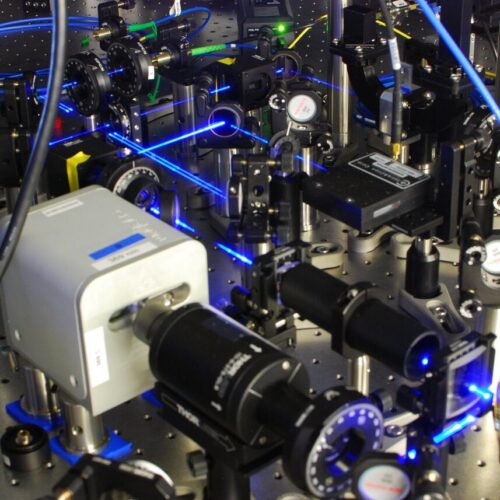
Hardware Systems for Quantum Technology & Precision Metrology
Project Leaders: Dr. Robert Wolf & Dr. Ting-Rei Tan
The realisation of quantum technology requires substantial investment in the development of advanced supporting technologies. Our interests span from advanced laser systems to world-leading precision frequency references and their impacts on quantum system performance.
Selected manuscripts:
- The role of master clock stability in scalable quantum information processing
- Analytically exploiting noise correlations inside the feedback loop to improve locked-oscillator performance
- Prediction and real-time compensation of qubit decoherence via machine-learning
- Towards fully commercial, UV-compatible fiber patch cords
- High-power spectral beamsplitter for closely spaced frequencies
- Frequency Stabilization of a 369 nm Diode Laser by Nonlinear Spectroscopy of Ytterbium Ions in a Discharge
Infrastructure
The Quantum Control Laboratory occupies one of the most precisely engineered research laboratories in the world. These facilities have been designed specifically to support quantum science and precision metrology research. Key features include temperature stability within 0.1 C, active and passive electromagnetic shielding, and vibration-isolation of the laboratory slab.
Leveraging the performance benefits of this space, the Quantum Control Laboratory builds and operates advanced infrastructure:
- Two radiofrequency Paul traps for experiments with linear ion crystals
- A Penning trap for quantum-many-body physics experiments with hundreds of trapped ions
- A Cryogenic Sapphire Oscillator (CSO) providing gigahertz reference frequencies with frequency stability 10^-16 and ultra-high spectral purity
- A Hydrogen loading facility for UV compatible fiber-optic patch cables
- Ultra stable optical reference cavities with drift rates as low as ~120 mHz/s


